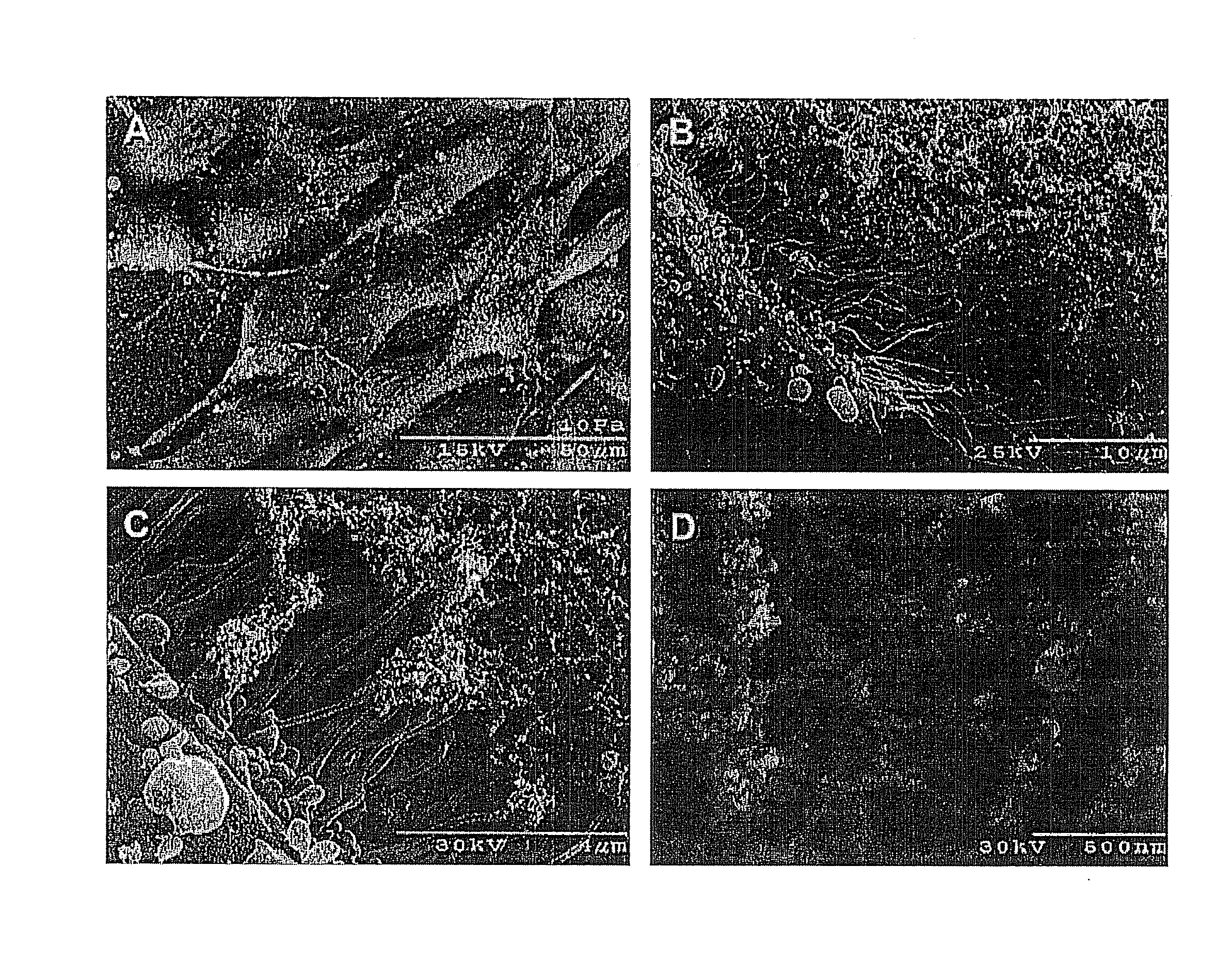Methods and Apparatus for Manufacturing Plasma Based Plastics and Bioplastics Produced Therefrom
a technology of plasma based plastics and bioplastics, which is applied in the field of bioplastics, can solve the problems of reducing such as fibrin elastomers, and the decline in interest in the use of protein bioplastics in plastic forms, and achieves the effect of reducing the water content of the plasti
- Summary
- Abstract
- Description
- Claims
- Application Information
AI Technical Summary
Problems solved by technology
Method used
Image
Examples
example 1
[0187]As an example of initial biocompatibility of plasma-based plastics, plasma-based constituents (plasma powder / glycerol 55 / 45) were vibratomed to 300 micron thickness samples and sterilized via incubation in 70% ethanol for ten minutes. Human MG-63 human osteoblastic cells were seeded upon samples and incubated for three days. Cell containing samples were processed for scanning electron microscopy (SEM). Cells exhibited ready binding, proliferation and migration upon the bioplastic surface. Furthermore, cell proteolytic remodeling of the plastic was readily apparent and extensive cellular processes are interacting directly with the bioplastic, with proteolytic degradation creating a porous material from a smooth surface.
example 2
[0188]Rabbit plasma bioplastic samples were prepared and placed in cell free serum containing cell culture medium and held at 37° C. for up to 60 days. Samples were weighed and measured for surface area at indicated times. The bioplastic was found to swell about 50% upon addition to media but thereafter to remain constant in size throughout the duration of sampling. This indicates that the present bioplastic will not spontaneously degrade consistent with cell proteolytic degradation.
example 3
[0189]Human plasma powder was sized into ≦38 micron and ≦150 micron distributions. Using similar processing conditions to those described in the first sentence of Example 1, processed slurries were thermomechanically molded into micron peg molds. The smaller particle size of ≦38 microns resulted in finer structural features compared to particle sizes of ≦150. In some embodiments, useful particle size ranges for the human plasma powder can be 38-500 microns, or 50-200 microns or 75-150 microns.
PUM
| Property | Measurement | Unit |
|---|---|---|
| temperatures | aaaaa | aaaaa |
| pressure | aaaaa | aaaaa |
| temperature | aaaaa | aaaaa |
Abstract
Description
Claims
Application Information
 Login to View More
Login to View More - R&D
- Intellectual Property
- Life Sciences
- Materials
- Tech Scout
- Unparalleled Data Quality
- Higher Quality Content
- 60% Fewer Hallucinations
Browse by: Latest US Patents, China's latest patents, Technical Efficacy Thesaurus, Application Domain, Technology Topic, Popular Technical Reports.
© 2025 PatSnap. All rights reserved.Legal|Privacy policy|Modern Slavery Act Transparency Statement|Sitemap|About US| Contact US: help@patsnap.com



